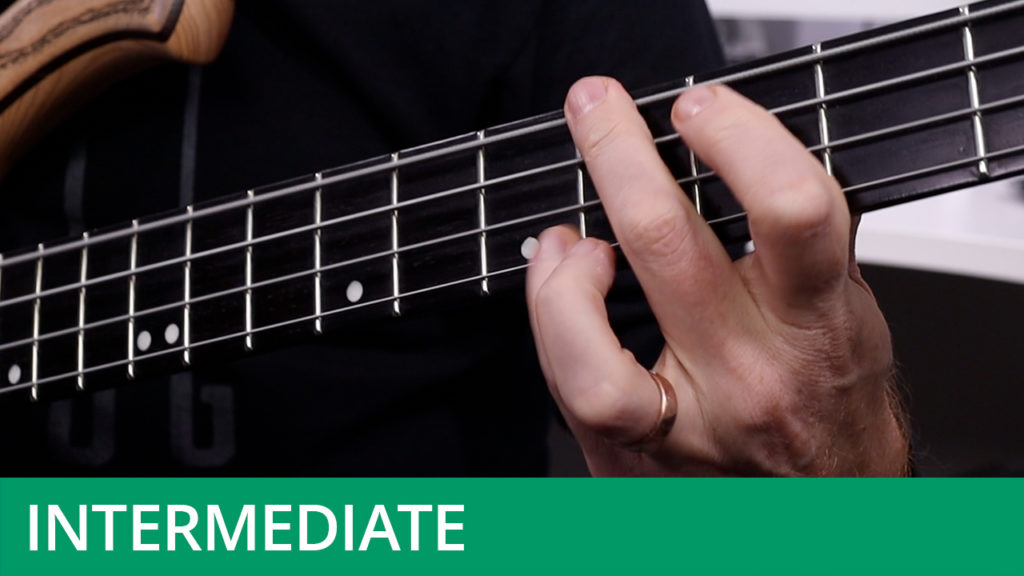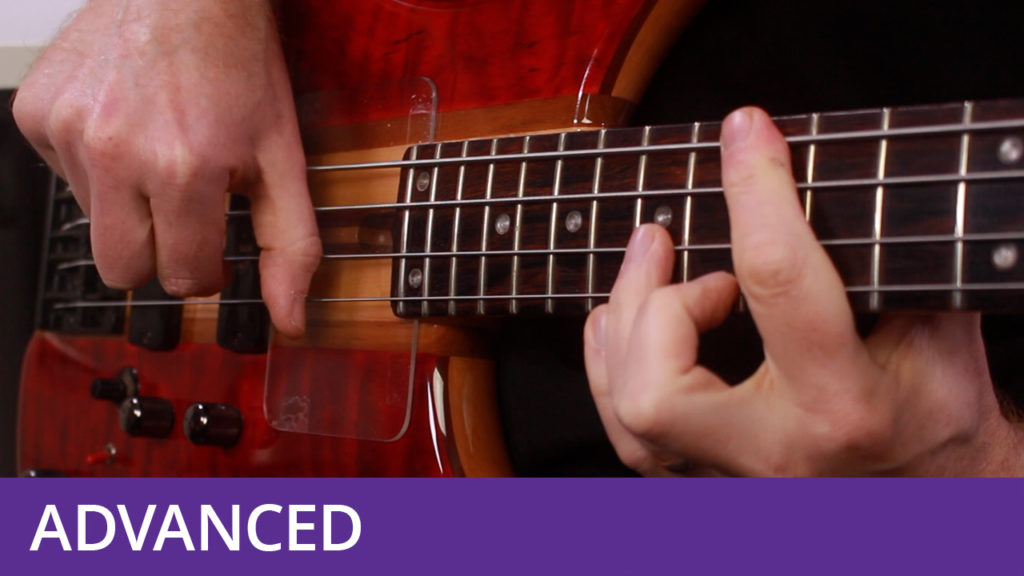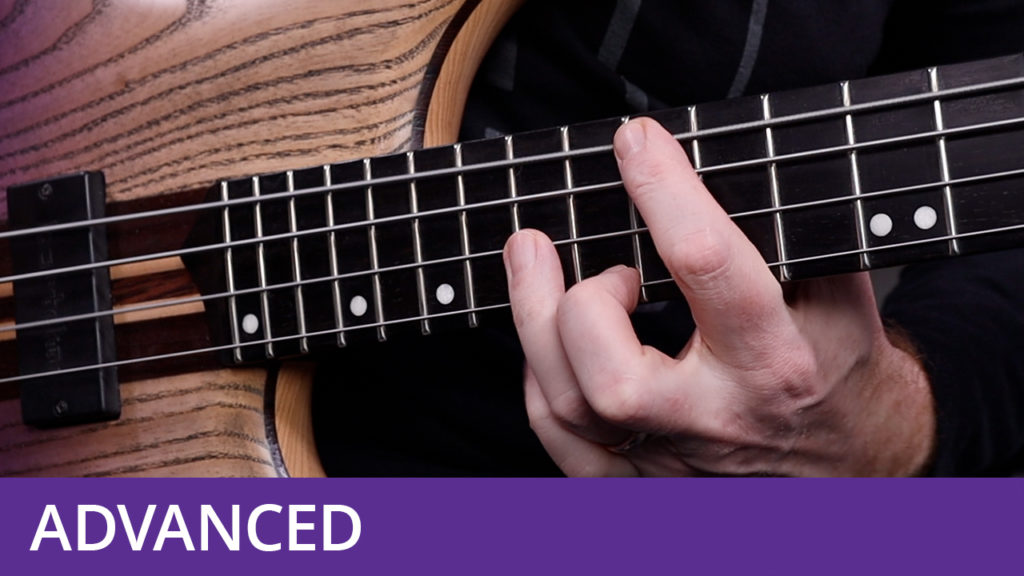Bass Lick of the Week #15
Course Duration: | Difficulty Level: 3
This exercise is a slow-tempo chordal lines that uses open string tenths and harmonics.
This line begins with a hammer-on from D to E at the twelfth and fourteenth frets of the D-string. This is immediately followed by a pull-off from A to G# at the fourteenth and thirteenth frets of the G-string. With the G# still ringing, play the open E-string: this will create a ‘major tenth’ sound, which is a major third interval separated by an octave (or more). This combination of notes strongly implies an E major chord, since it contains a root note (E) and a major third (G#), the two most important notes in the chord. This phrase is followed by lines that end with open string tenths on the D and G-strings. Tenths are often used by bassists to create harmony and open string tenths such as these are especially useful as you can allow a string to continue ringing whilst you play other melodic ideas. Stanley Clarke explored this concept in his songs ‘School Days’ and ‘Lopsy Lu’ and Mark King (Level 42) continued to develop the idea on songs such as ‘Dune Tune’. You’ll also hear tenths used by bassists such as Larry Graham, Flea, Victor Wooten and Jaco Pastorius, among others.
The final chord in the second bar is G^7 and this is played as a combination of fretted notes and harmonics. Fret the G at the tenth fret of the A-string with your second finger, and use your first finger to barre across the harmonics at the ninth fret of the D and G-strings.
This entire two-bar sequence is then repeated, but in the fourth bar the G^7 chord is replaced by an F^7. This chord is played with only fretted notes: fret the F at the eighth fret of the A-string with the second finger, the A at the seventh fret of the D-string with the first, and the E at the ninth fret of the G-string with your fourth.
When playing chordal lines such as this, try to allow the notes to ring into one another where possible. Using some reverb can also add some presence to the line - on the recording I used the EBS DynaVerb pedal, set as follows: Reverb: 1 o’clock, Tone: 11 o’clock, Type: Hall, Room: C.
To download the backing track and PDF worksheet for this exercise, please visit the Free Stuff section of the website.




